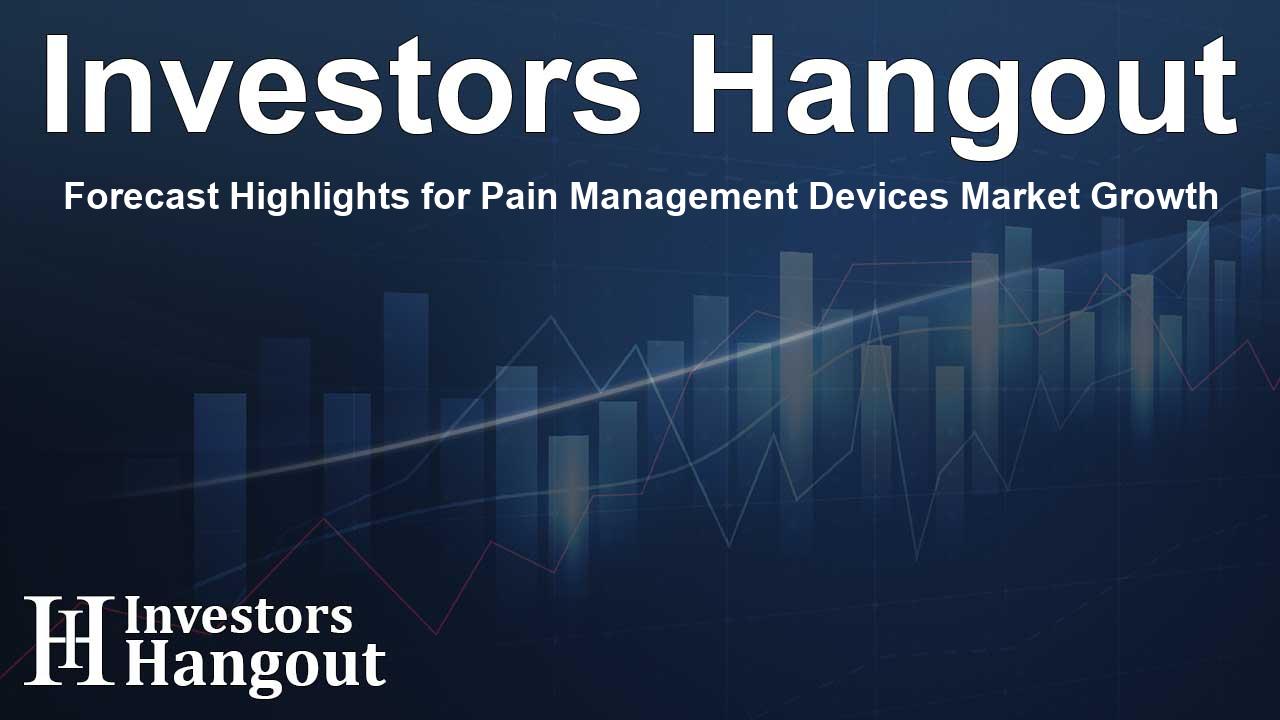Forecast Highlights for Pain Management Devices Market Growth

Overview of the Pain Management Devices Market
The pain management devices market is on a trajectory of significant growth, with a valuation of USD 7.68 billion as of 2024. This market is expected to reach approximately USD 19.1 billion by 2034, showcasing a compound annual growth rate (CAGR) of 9.54%. This robust growth can be attributed to innovative technologies and a broadening healthcare landscape that seeks to manage pain effectively.
Market Dynamics
Several factors drive the expansion of the pain management devices market. Among these, the increasing adoption of non-invasive treatments and neuromodulation applications are particularly noteworthy. As healthcare providers and patients seek alternatives to traditional pain relief methods, the interest in devices that can alleviate pain without the use of pharmaceuticals continues to grow.
The Increasing Demand for Technological Advancements
Devices like transcutaneous electrical nerve stimulation (TENS) units and wearable pain relief technologies are gaining popularity as they often provide effective pain control without the risk of addiction. The integration of smart technologies, such as artificial intelligence (AI) and the Internet of Things (IoT), is also revolutionizing treatment personalization.
Key Growth Drivers
One significant factor influencing the growth of the pain management devices market is the ongoing opioid crisis. There is an increasing push to reduce opioid prescriptions due to their addictive properties. In response, healthcare professionals are turning to safer alternatives like neurostimulation and radiofrequency ablation, which promise to deliver pain relief while minimizing the risk of dependency.
Additionally, a growing elderly population will likely increase the demand for pain management solutions, as older individuals typically experience more chronic pain conditions. Awareness campaigns about pain management and advances in surgical techniques also contribute to the market's upward momentum.
Segment Analysis
Several segments constitute the pain management devices market, including product types, applications, and end-users.
Product Segmentation
The neurostimulation segment currently leads the market, primarily due to its effectiveness in managing chronic pain. As the segment evolves, radiofrequency ablation is expected to experience rapid growth during the forecast period, as it is recognized as a minimally invasive option leading to quicker patient recoveries.
Application Insights
In terms of applications, neuropathic and cancer pain segments dominate the market, fueled by rising incidences requiring chronic management. Pain management devices are also integral in rehabilitation settings post-surgery, reflecting their versatility and importance in comprehensive patient care.
Regional Market Insights
North America is forecasted to continue dominating the pain management devices market with a substantial 48% market share as of 2024. This dominance stems from an established healthcare infrastructure and an increasing number of patients experiencing chronic pain, necessitating alternative pain management strategies.
Asia-Pacific, however, is projected to grow at the fastest rate, driven by a rising population and the implementation of advanced healthcare services. As healthcare investments increase, the demand for modern pain management technologies will likely bolster the market.
Recent Developments and Innovations
Recent advancements in the sector reflect a growing commitment to innovation. Companies are securing significant funding to enhance device capabilities and expand clinical trials. For instance, Nalu Medical received a notable commitment for developing neurostimulation solutions aimed at treating chronic pain conditions. These investments indicate a thriving landscape for product development in the pain management market.
Challenges Facing the Market
Despite the positive outlook, challenges persist, particularly concerning the high costs associated with pain management devices. Initial investment and maintenance costs can be barriers to accessibility. Moreover, as regulatory requirements evolve, companies may face hurdles achieving quick market entry for new products.
Future Outlook
As the pain management devices market evolves, stakeholders can expect enhanced collaboration between technology developers and healthcare providers. The shift towards personalization in treatment plans indicates a promising future for patients seeking effective pain relief solutions.
Frequently Asked Questions
What is the expected growth of the pain management devices market?
The pain management devices market is projected to grow from USD 7.68 billion in 2024 to approximately USD 19.1 billion by 2034.
What are the primary drivers of this market growth?
The major drivers include the growing opioid crisis, advancements in non-invasive technologies, and the increasing demand for alternatives to traditional pain relief methods.
What segments dominate the pain management devices market?
The neurostimulation product segment currently leads the market, while applications for neuropathic and cancer pain are notably significant.
Which region holds the largest market share?
North America accounts for a substantial market share of 48%, driven by an advanced healthcare infrastructure and a high prevalence of chronic pain conditions.
How are companies innovating within this market?
Companies are focusing on research and development, securing funding for innovative devices, and exploring new technologies like AI to enhance patient outcomes.
About The Author
Contact Evelyn Baker privately here. Or send an email with ATTN: Evelyn Baker as the subject to contact@investorshangout.com.
About Investors Hangout
Investors Hangout is a leading online stock forum for financial discussion and learning, offering a wide range of free tools and resources. It draws in traders of all levels, who exchange market knowledge, investigate trading tactics, and keep an eye on industry developments in real time. Featuring financial articles, stock message boards, quotes, charts, company profiles, and live news updates. Through cooperative learning and a wealth of informational resources, it helps users from novices creating their first portfolios to experts honing their techniques. Join Investors Hangout today: https://investorshangout.com/
The content of this article is based on factual, publicly available information and does not represent legal, financial, or investment advice. Investors Hangout does not offer financial advice, and the author is not a licensed financial advisor. Consult a qualified advisor before making any financial or investment decisions based on this article. This article should not be considered advice to purchase, sell, or hold any securities or other investments. If any of the material provided here is inaccurate, please contact us for corrections.
